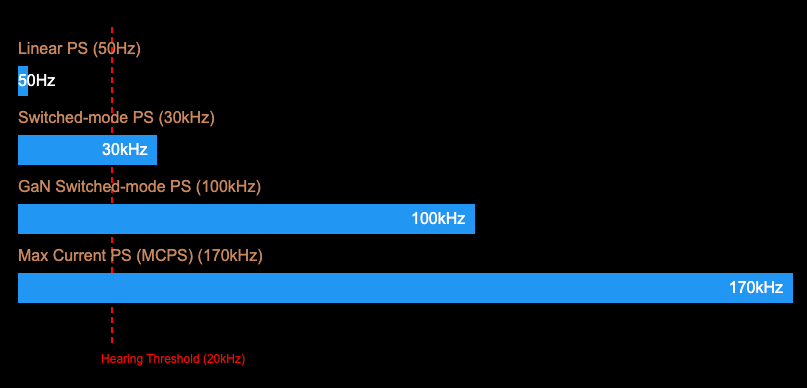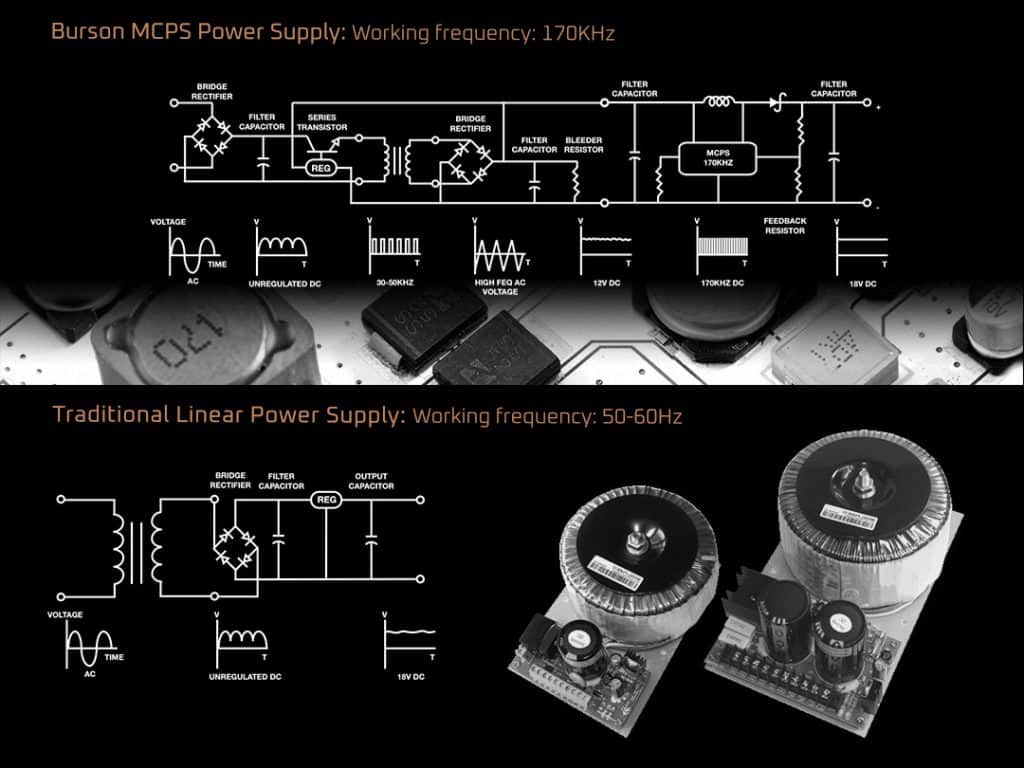Burson Max Current Power Supply
Next Generation of Power Supply for HiFi
The Journey of Electricity
Ever wondered how electricity goes from a power plant to making your favorite songs sound incredible? Let’s break it down in a more fun and easy-to-understand way!
When electricity leaves the power plant, it travels in 50-60Hz waves (think of gentle ripples in a pond). Inside your audio gear, a traditional linear power supply steps down the main voltage to around 12-30V using a big coil of wire called a transformer. But, even after this step, the voltage still carries those same 50-60Hz waves.
From there, audio engineers use gadgets called rectifiers and capacitors to turn this wavy energy into direct current (DC), which is what your audio gear runs on.
But there’s a catch! This old-school design comes with two big issues: impedance and noise. Here’s why they’re not so great:


Impedance & Resistance: The Traffic Jam of Electricity
Imagine electricity trying to race down a long road, but the longer the road, the slower it goes. That’s what happens inside a power transformer, which is like a super-long stretch of wire with lots of resistance. Even the best copper transformers have over 15 ohms of resistance! This means when the music needs a sudden burst of energy, the transformer can’t keep up. The sound becomes less punchy and less detailed.
Burson’s Max Current Power Supply (MCPS) solves this by ditching the transformer entirely! Instead, it uses transistors with less than 1 ohm of resistance. It’s like clearing the highway for electricity, letting it zoom straight to the circuits without delay. The result? Clearer, punchier, and more dynamic music – exactly how it should be.
Noise: The Unwanted Guest in Your Music
Traditional power supplies work at 50-60Hz, the same range as human hearing, making them super noisy. Plus, charging at this slow rate means they need a massive bank of capacitors to handle the power demands, which adds more problems.
Enter Burson’s MCPS, operating at a high frequency of 170kHz. This is way above the human hearing threshold of 20kHz, meaning you get a pitch-black soundstage where even the tiniest details come to life. The MCPS also converts the original energy waves into a more efficient square wave, allowing capacitors to charge faster. That’s why Burson gear doesn’t need huge capacitor banks!
The result? You get a sound that’s lifelike, dynamic, and packed with detail, even during the most demanding musical moments. It also delivers a powerful punch – a 2Wpc Burson Fun amp can feel more powerful than a regular 4Wpc amp!
Welcome to a New Era of Audio
Back in the day, big and heavy audio gear was all the rage. Huge transformers and massive capacitor banks were a sign of top performance. But times have changed!
By removing the transformer, Burson’s MCPS is not only more responsive and quiet but also much more efficient. It squeezes high-end performance into sleek designs that fit perfectly in your living room. This is a new chapter in audio engineering where style meets performance.
So, get ready for an audio experience that’s as beautiful as it is powerful!
